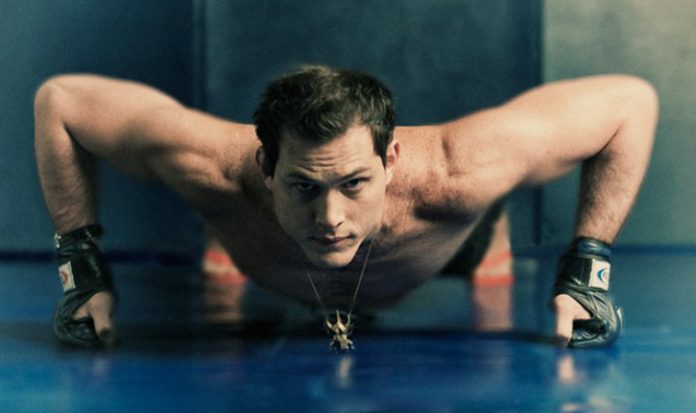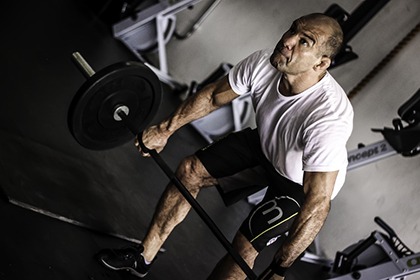
If I had a dollar for every time I saw a person in “great shape” gas out on their first day of grappling, I’d be a very rich man. unfortunately for me, and those “in shape” people, this is not the case. Brazilian Jiu-Jitsu places physical demands on the body that nothing much can prepare you for. Even if you’ve trained another grappling martial art before, you’ll need time to adjust. During this adjustment period, you’ll get tired and gas out. But, is there a way to get in specific Jiu-Jitsu shape? The answer is yes, but designing a Jiu-Jitsu workout is not as easy as following the latest Fitness Blender at-home routine.
A Jiu-Jitsu workout needs to be very specific in both nature and design. The goal is to improve someone’s work capacity, strength, and body composition so that performance can go up. However, you can’t just go lift weights or run a 5k every other day and hope to dominate on the mats. Nor should you go ultra-specific and try to stand on a stability ball while wearing your Gi and holding a kettlebell upside down. You need to find the right balance of specificity to give you the best bang for your buck. The only way to achieve this goal is through correct methodology.
Method Of Choice
The Bondarchuk Principle. That’s all it takes to build an awesome Jiu-Jitsu Workout. Since most of you have never heard of it, let me make things clearer. Dr. Anatoly Bondarchuk is the most accomplished hammer thrower in the world. Now a Soviet Olympic coach, Bondarchuk has come up with a set of principles that allow for the development of desired athletic abilities transferable to any sport.
To begin with, Bondarchuk preaches putting explosive work at the beginning of a workout. Since plyometric work requires the most nervous system engagement, two things are accomplished. First, you are fresh enough to truly use all your potential for execution of the exercises. Second, the activation of the nervous system is like an extended warm-up, getting you primed for work. The next part is heavy strength training. Lower body compound lifts are the usual choice here, although anything that helps develop maximal strength can be used. The third element of the complex is utilizing a superset (more on this later) for contrasting upper body muscle groups. Finally, before you put in some conditioning, you get to work in an area that is your specific weakness.
So how does this fit in a Jiu-Jitsu workout? Well, first you’re going to go for a specific plyometric movement. Jumps, medicine ball throws or explosive BJJ drills fit the description. After a substantial rest, you’ll go for your max strength exercise. Lower body powerlifts or advanced gymnastic isometric exercises are on top of the pile here. Upper body exercises can vary, from bodyweight to kettlebell stuff. As far as conditioning goes, sprint intervals are never a bad thing, although more specific drilling work can be done as well.
A few more things you need to know about BJJ conditioning workouts: https://bjj-world.com/conditioning-for-bjj/
The Best Tools
Before we look at a sample Jiu-Jitsu workout based on the Bondarchuk principles, let’s talk about the best tools you can use. While Bosu balls are cool looking, they’ll injure you before they help you with grappling. So, make sure you apply Occam’s razor – the simplest answer is usually the correct one. As such, stay away from all the high-tech, fancy-looking crap and focus on proven methods.
For a BJJ athlete, bodyweight work is always going to reign supreme. The idea is that you can get into mechanically disadvantageous positions in a very safe manner with bodyweight exercises. It’s what “functional” fitness looks to achieve, but it’s the right way to do it. Basic bodyweight exercises are a logical starting point for most. For those that feel too advanced, look into strength training for gymnastics. You’ll be surprised at how un-advanced you actually are.
Here’s how to use gymnastics to improve your BJJ: https://bjj-world.com/use-gymnastics-to-become-strong/
Weightlifting is the second method of choice for a grappler. It’s probably redundant to repeat this, but please, stay away from bodybuilding like stuff. Skip the triceps pushdowns and calf raises and focus on the real lifts. That said, any of the front-loaded lower body lifts are the preferred option for grapplers. Deadlift variations, front squats, Zerchers and good mornings will strip fat off you while making you super-hero strong.
In a more modern (although it is, in fact, not) context, the only popular tool that you should look to use are kettlebells. Just make sure you get a coach to explain the proper form because BJJ is enough of an injury risk by itself. Kettlebells are amazing tools to get you both strong and in shape and can be used for every part of the Bondarchuk complex.
Fast And Effective Jiu-Jitsu Workout
So, without further ado, let’s give Jiu-Jitsu workout designing a try. Being the good people that we are here at BJJ World, we’re going to give you two workout options. Why? Well, training only once per week might not cut it for those of you looking to compete for at a high level So’ the template below is one for a two-a-week training schedule.
Oh, and please remember to ALWAYS warm up before training.
DAY 1
PLYOMETRIC EXERCISE (Jump Variation) – High Box Jumps for 5 sets x 3 reps
MAXIMAL STRENGTH EXERCISE (Front loaded lift) – Deadlift for 3-5 sets x 2-5 reps
UPPER BODY SUPERSET (Push-Pull Superset) – Kettlebell Floor Press + Pull-ups for 4 sets x 6-12 reps
WEAK AREA (OR CORE WORK) – Superset: Band dislocators + Band Pullaparts for 3 sets x 8-15 reps
CONDITIONING (Sprint ) – 200-meter sprints for 3 sets (complete recovery in between)
DAY 2
PLYOMETRIC EXERCISE (Olympic Lift) – 1 Arm Kettlebell Snatch for 5 sets x 3 reps (Each side)
MAXIMAL STRENGTH EXERCISE (Upper Body Lift) – Bench Press for 3-5 sets x 2-5 reps
UPPER BODY SUPERSET (Push-Pull Superset) – Handstand Pushups + Inverted Rows (holding on a Gi) for 4 sets x 6-12 reps
WEAK AREA (OR CORE WORK) – Kettlebell Turkish Get Ups for 3 sets x 8-10 reps (Each side)
CONDITIONING (HIIT Drills) – BJJ Specific Drill Circuit (Spawls, Sit outs, Break Fall to Technical Lift, Penetration Step, Bridge with Hip Escape) for 3-5 sets x 40 seconds work/20 seconds rest.
On a final note, rest periods between sets of plyometrics and maximal strength should be at least 90 seconds and up to 3 minutes. A minute of rest is enough between the sets of all other exercise categories. Give this specific Jiu-Jitsu workout a try and watch the fat melt off while you become a beast on the mats. You can thank us later.
Check Also:
Travis Stevens’ 3 weeks / 3x per Week Weight Lifting Program for Grapplers


![Darce Choke Encyclopedia – Origins, Mechanics and Variations [2025] BJJ, choke, Brabo, BJJ Darce Choke, D'arce Choke, Darce BJJ Choke](https://bjj-world.com/wp-content/uploads/2017/11/JungPoirierLeeYahoo-218x150.jpg)










![Countering with Crab Ride Anthony Budion DVD Review [2025] Countering with Crab Ride Anthony Budion DVD Review](https://bjj-world.com/wp-content/uploads/2025/03/countering-with-crab-ride-anthony-budion-dvd-review-218x150.png)
![Closet Closed Guard Craig Jones DVD Review [2025] Closet Closed Guard Craig Jones DVD Review](https://bjj-world.com/wp-content/uploads/2025/03/closet-closed-guard-craig-jones-dvd-review-218x150.png)
![Xanadu Back Takes Levi Jones-Leary DVD Review [2025] Xanadu Back Takes Levi Jones-Leary DVD Review](https://bjj-world.com/wp-content/uploads/2025/03/xanadu-back-takes-levi-jones-leary-dvd-review-218x150.png)

![No-Gi Grapplers Guide To Front Headlock Joel Bane DVD Review [2025] No-Gi Grapplers Guide To Front Headlock Joel Bane DVD Review](https://bjj-world.com/wp-content/uploads/2025/03/no-gi-front-headlock-joel-bane-dvd-review-218x150.png)

![Zen Guide To Submission Grappling Margot Ciccarelli DVD Review [2025] Zen Guide To Submission Grappling Margot Ciccarelli DVD Review](https://bjj-world.com/wp-content/uploads/2025/02/submission-grappling-margot-ciccarelli-dvd-preview-324x235.png)

![Dima Murovanni Kill The Collar Tie BJJ Trendsetters DVD Review [2024] Dima Murovanni Kill The Collar Tie BJJ Trendsetters DVD Review](https://bjj-world.com/wp-content/uploads/2024/09/dima-murovanni-kill-the-collar-tie-dvd-review-100x70.png)

![Finish on the Back Ethan Crelinsten DVD Review [2024] Finish on the Back Ethan Crelinsten DVD Review](https://bjj-world.com/wp-content/uploads/2024/10/finish-on-the-back-ethan-crelinsten-dvd-review-100x70.png)





![Grappling Takedown Dominance Brandon Ruiz DVD Review [2025] Grappling Takedown Dominance Brandon Ruiz DVD Review](https://bjj-world.com/wp-content/uploads/2025/01/grappling-takedown-dominance-brandon-ruiz-dvd-review-100x70.png)
![Master Scissor Sweep Ryan Scialoia DVD Review [2025] Master Scissor Sweep Ryan Scialoia DVD Review](https://bjj-world.com/wp-content/uploads/2024/12/scissor-sweep-ryan-scialoia-dvd-review-100x70.png)

![Closet Closed Guard Craig Jones DVD Review [2025] Closet Closed Guard Craig Jones DVD Review](https://bjj-world.com/wp-content/uploads/2025/03/closet-closed-guard-craig-jones-dvd-review-100x70.png)
![Effectively Passing The Guard Luke Griffith DVD Review [2025] Effectively Passing The Guard Luke Griffith DVD Review](https://bjj-world.com/wp-content/uploads/2025/01/passing-the-guard-luke-griffith-dvd-review-100x70.png)


![Gracie Secrets Closed Guard Kyra Gracie DVD Review [2024] Gracie Secrets Closed Guard Kyra Gracie DVD Review](https://bjj-world.com/wp-content/uploads/2024/12/closed-guard-kyra-gracie-dvd-review-100x70.png)
![Tiny Woman Guide To The Guard Ann Kneib DVD Review [2024] Tiny Woman Guide To The Guard Ann Kneib DVD Review](https://bjj-world.com/wp-content/uploads/2024/11/tiny-woman-guide-to-the-guard-ann-kneib-dvd-review-100x70.png)


![Xanadu Back Takes Levi Jones-Leary DVD Review [2025] Xanadu Back Takes Levi Jones-Leary DVD Review](https://bjj-world.com/wp-content/uploads/2025/03/xanadu-back-takes-levi-jones-leary-dvd-review-100x70.png)
![Welcome To The Darce Side Travis Moore DVD Review [2025] Welcome To The Darce Side Travis Moore DVD Review](https://bjj-world.com/wp-content/uploads/2025/01/welcome-to-the-darce-side-travis-moore-dvd-review-100x70.png)


![How to Double Leg Anyone Kevin Lee DVD Review [2024] How to Double Leg Anyone Kevin Lee DVD Review](https://bjj-world.com/wp-content/uploads/2024/11/how-to-double-leg-anyone-kevin-lee-dvd-review-100x70.png)
![Wrestling For Jiu-Jitsu Shawn Williams DVD Review [2025] Wrestling For Jiu-Jitsu Shawn Williams DVD Review](https://bjj-world.com/wp-content/uploads/2025/01/wrestling-for-jiu-jitsu-shawn-williams-dvd-review-100x70.png)
